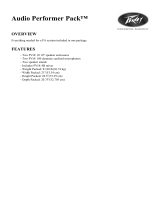3 WATER HEATER INSTALLATION
3.1 Checking Equipment Before You Install
• Inspect the unit completely upon receipt from the freight carrier before signing the bill of lading. Inspect the
appliance and all accompanying parts for signs of impact or mishandling. Verify the total number of pieces shown
on packing slips with those actually received. Contact the freight carrier immediately if any damage or shortage is
detected.
• Check the data decal on the appliance. Be sure the electrical, water and gas supply is adequate for the installation.
• Carefully remove all side and top shipping supports and bracing. If possible, do not remove the wooden base/skid
assembly until the product has been moved to its final location for installation and operation (see: Handling and
Locating the Water Heater).
WARNING: The fuel-fired burner supplied with this water heater may be removed, packaged and shipped
separately to avoid damage during transport and handling. Confirm the burner decal data matches with the
water heater’s rating decal data before mating in the field (i.e. Model, BTU/hr input, and Energy Source).
CAUTION: The hot and cold water distribution system piping connected to this product must be suitable for 150 psi at
210°F in the event the water heater controls malfunction.
3.2 Codes
The equipment must be installed in accordance with those installation regulations in force in the local area where the
installation is to be made. Authorities having jurisdiction must be consulted before installation is made. In the absence
of such requirements, the installation must be in accordance with the instructions in this manual, appliance markings
and supplemental instructions and in compliance with the latest edition of the National Fuel Gas Code, ANSI
Z223.1/NFPA 54. Where required by the Canadian authority having jurisdiction, the equipment must be installed in
accordance with the latest edition of the CSA B149.1 Natural Gas and Propane Installation Code and applicable
Provincial Regulations. All appliances conform to the current edition of the ASME Boiler and Pressure Vessel Code,
Section IV, Part HLW.
3.3 Electrical Requirements
See appliance rating decal for electrical service requirements. The appliance must be electrically supplied and
grounded in accordance with the requirements of the authority having jurisdiction or, in the absence of such
requirements, with the latest edition of the National Electrical Code ANSI/NFPA No. 70. In Canada, the electrical
service must conform to local electrical codes and/or CSA C22.1, Canadian Electrical Code, Part 1.
• All wiring between the unit and field installed devices must be made with type T copper wire.
• Line voltage wire exterior to the appliance must be enclosed in approved conduit or approved metal clad cable.
• To avoid serious damage, DO NOT energize the unit until the system and appliance is full of water.
Utiliser du fil de cuivre de la taille appropriée pour le service électrique entrant. Les dommages résultant de l'utilisation
de fil d'aluminium seront exclus du champ d'application de la garantie de cet appareil.
120V 1 phase, 60 Hz service wiring connections are located in the enclosure on the water heater. Some models may
additionally have high voltage connections located on the burner.
Be certain that high and low voltages are connected to the correct points; also, check rotation of motors on three phase
models. The burners are shipped separately from the heaters and are provided with connecting wires in conduit to be
connected after the burner is in place in the combustion chamber. Wires and terminal block connections are marked
for simplified hookup.
3.4 Handling and Locating the Water Heater
WARNING: Use industry standard safe rigging methods, such as including the use straps and spreader bars
and lifting from the water heater base skid assembly, when attempting to lift or move this product. Failure to
follow industry safe rigging methods could result in property damage, serious injury or death.
1. These units are suitable for indoor installation only (unless specified).
2. Locate the unit so that if water connections should leak, water damage will not occur. When such locations are
unavoidable, install a suitable drain pan, and plumb pan to ensure adequate drainage in the event of a leak. Under
no circumstances is the manufacturer responsible for water damage in connection with this unit, or any of its
components. The manufacturer’s warranty does not cover water damage.




















